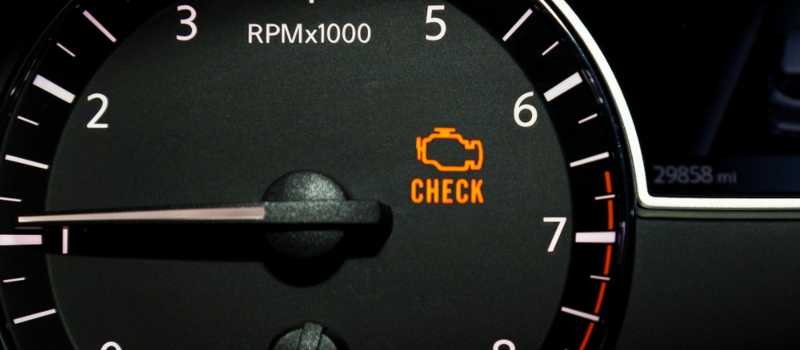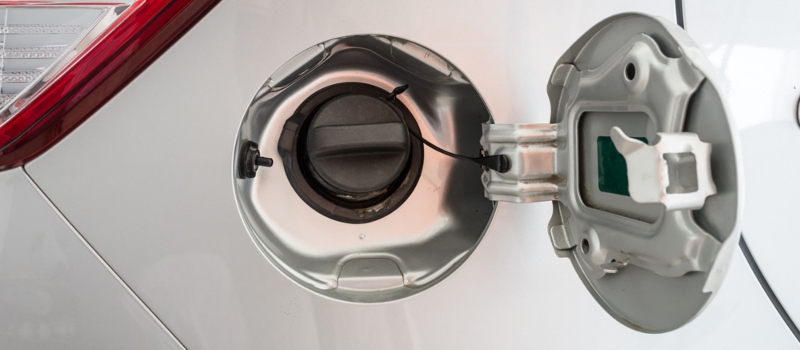
How to respond to a check engine light
24th Jun, 2019
Nobody loves the sight of a check engine light. After all, it’s basically a shorthand way of telling you that something’s wrong with the most pivotal part of your car. Now, it doesn’t necessarily mean you need to scrap your car – the issues it could be signalling can vary greatly in severity, and the temptation for many drivers is to leave them for much longer than they realistically should do; days, weeks, or even months. But here are just a few reasons why that’s such a bad idea!
What does a check engine light mean?
In a nutshell, it simply means that your vehicle’s on-board computer system has detected an issue. Some people underestimate the role that electronics plays in modern consumer cars – it does much more than start your radio! On board systems control and monitor your car’s performance, controlling the fuel mixture and keeping an electronic eye on the engine, transmission, brakes and suspension. Under the surface there’s a lot of fluctuations with your car according to its temperature, speed, height and age, and mostly the system regulates these without the need for human input. However when there’s a fault it can’t rectify on its own, the system switches on a warning light to get your attention. Depending on the make and model of your car, the warning light can be one of several colours:
- A yellow or orange warning light means that it’s a minor fault that you should check out next time you stop
- A red warning light means that there is a serious fault, and you should stop the car immediately
- There could be several causes for it, which can range from relatively trivial to massively urgent.
- The most common reasons for an engine light to switch on
The most common reasons for an engine light to switch on
Oxygen sensor failure
Part of your fuel mixture system, oxygen sensors do what they say on the tin – they monitor the amount of unburnt oxygen in your car, and pass this information to the on-board computer so it can optimally regulate the mixture. When the sensor is defective, it sends over a skewed set of data, which often means the engine will burn more fuel than necessary. This has the immediate effect of making the car less fuel efficient, as well as increasing emissions. More pressingly, it can also cause long-term and expensive damage to the spark plugs and exhaust system.
Insecure or faulty fuel cap

Sure, it might be one of the least mechanically complex parts on your car, but it’s important not to underestimate how vital your fuel cap is to the overall engine system. It seals the fuel system and in doing so regulates the pressure inside the fuel tank, which creates the optimum environment for fuel delivery. Not just that, but it also prevents environmentally damaging fumes from escaping. The system will see a faulty or unsecured fuel cap as a major issue, and rightly so!
Faulty mass airflow sensor
The mass airflow sensor is another crucial part in the fuel delivery system, as it works with the oxygen sensors to regulate how much air gets into the engine. Unless it’s functioning properly, you can end up with rough idling, unexpected changes in throttle, and issues when starting the car. It can also damage the oxygen sensors and spark plugs.
The first steps to take when your check engine light comes on
Even if you think you know the reason that your check engine light has come on and you reckon it’s only a minor problem, it’s still very risky to ignore it. Some drivers have admitted ignoring the light for more than 12 weeks, which is one heck of a gamble to make, even with a minor yellow or orange light! Here are some of the first steps it’s worth taking if you notice yours illuminate:
Tighten the fuel cap
As it’s one of the most common minor malfunctions, you may find that you can fix an orange or yellow light by the simple expedient of stopping and re-securing the fuel cap. Then, try continuing on. You may find that your light resets after a short delay. Even if it does though, we’d recommend getting it checked out by a professional mechanic, just in case.
Use built-in diagnostic features
Many modern cars have detailed diagnostic features for you to utilise, beyond the comparatively simple engine check light. If you’ve got the knowledge and ability to use these for yourself, it’s worth doing so in order to narrow down the problem. In some cases, you may even be able to fix the issue yourself, but if not it gives you valuable information to pass to the professionals.
Find a safe place to pull over
This is especially important if your engine is showing a red light – find a place to stop and do so, as it’s likely warning you of something that could put you in immediate danger. This may involve ultimately getting the vehicle towed, which is far from an ideal scenario, or a roadside repair. Either way, though it may be a lot of hassle and bother, it’s still far better than the alternative of risking your safety!
Apart from in the most serious of instances, you may find that when you take it to the mechanic, the problems aren’t as worrying as you may have first thought. The electrics on some cars can be particularly vulnerable to ‘gremlins’ and therefore may be quick fixes. If they’re not, though, you may find yourself faced with the prospect of having to scrap a car. And while it’s not an easy decision to make, here at Scrap Car Network we’re here to take as much stress out of the equation for you as we can. We make it fast and simple to scrapping cars for cash – just enter your car reg and postcode into our website for an instant, no obligation valuation!